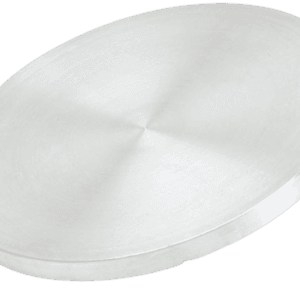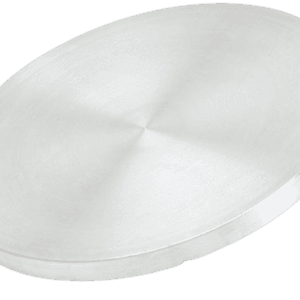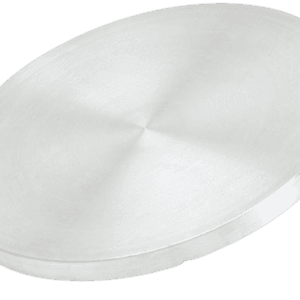Nickel Antimonide Sputtering Target Description
Nickel Antimonide Sputtering Target is a specialized material used in the sputtering process for thin film deposition. Nickel antimonide is a semiconductor material, and thin films of NiSb deposited using sputtering targets can be utilized in various semiconductor applications.
TFM specializes in creating Nickel Antimonide Sputtering Targets with optimal density and minimal average grain size. By employing advanced sputtering techniques, we deposit ultra-high purity thin films of metal or oxide materials onto solid substrates. The exceptional purity of our targets guarantees superior quality and performance of the resulting films.
Related Product: Nickel Silicide Sputtering Target, Nickel Oxide Sputtering Target
Nickel Antimonide Sputtering Target Specifications
| Compound Formula | NiSb |
| Molecular Weight | 180.45 |
| Appearance | gray target |
| Melting Point | 1102℃ |
| Density | 8.56 g/cm3 |
| Available Sizes | Dia.: 1.0″, 2.0″, 3.0″, 4.0″, 5.0″, 6.0″ Thick: 0.125″, 0.250″ |
Nickel Antimonide Sputtering Target Handling Notes
Indium bonding is recommended for Nickel Antimonide Sputtering Targets due to their characteristics that are not ideally suited for sputtering. Nickel antimonide has low thermal conductivity and is susceptible to thermal shock, making it prone to issues such as brittleness during the sputtering process. Using indium bonding helps mitigate these issues by improving thermal and mechanical stability, ensuring consistent performance and high-quality thin films.
Nickel Antimonide Sputtering Target Application
- Nickel Antimonide Sputtering Targets are versatile materials with various applications:
- Semiconductor Devices: Essential for the fabrication of electronic components such as transistors and diodes, where their semiconductor properties are utilized.
- Thermoelectric Devices: Useful in devices that convert heat energy into electrical energy, making them valuable for energy harvesting and temperature control applications.
- Magnetic Devices: Nickel antimonide’s potential magnetic properties can be applied in magnetic devices or spintronics, contributing to advancements in magnetic storage and sensing technologies.
- Research and Development: Employed in R&D to explore new technologies and develop novel electronic devices, benefiting from its unique properties.
- Optoelectronics: Depending on the specific properties of the deposited films, NiSb may be used in optoelectronic devices such as photodetectors or LEDs, enhancing optical and electronic performance.
Nickel Antimonide Sputtering Target Packaging
Our Nickel Antimonide Sputtering Target is meticulously handled during storage and transportation to ensure that the quality of our products is maintained in their original condition.





Reviews
There are no reviews yet.